Acknowledgements V
Institutional Abbreviations VII
Abbreviations used in Figures IX
General Introduction 1
Infraorder Dinocephalia SEELEY 1894b 5
Introduction 5
Historical Review 5
Taxonomy 7
Systematic Review 10
Infraorder Dinocephalia SEELEY 1894b 11
Superfamily Estemmenosuchoidea TCHUDINOV 1960 12
Family Estemmenosuchidae TCHUDINOV 1960 12
Superfamily Anteosauroidea BOONSTRA 1962 13
Family Brithopidae BOONSTRA 1972 13
Subfamily Brithopodinae EFREMOV 1954 14
Subfamily Anteosaurinae 1954a 17
Family Titanosuchidae BOONSTRA 1972 20
Subfamily Titanosuchinae BROOM 1903c 20
Subfamily Tapinocephalinae LYDEKKER 1890a 20
Tribe Struthiocephalini BOONSTRA 1963a 24
Tribe Tapinocephalini GREGORY 1926 27
Tribe Riebeeckosaurini BOONSTRA 1963a 35
Dinocephalia incertae sedis 35
General Osteology 38
Functional Anatomy 56
Origins and Evolution 60
Mode of Life 60
Geographical and Geological Distribution 62
Infraorder Dicynodontia OWEN 1859 64
Introduction 64
Historical Review 65
Taxonomy 67
Systematic Review 74
Infraorder Dicynodontia OWEN 1859 74
Superfamily Venjukovioidea WATSON & ROMER 1956 74
Family Venjukoviidae EFREMOV 1940b 74
Family Otsheriidae TCHUDINOV 1960 76
Superfamily Dromasauroidea BROOM 1907d 76
Superfamily Eodicynodontoidea CLUVER & KING 1983 78
Superfamily Endothiodontoidea OWEN 1976a 79
Superfamily Pristerodontoidea CLUVER & KING 1983 82
Family Dicynodontidae CLUVER & KING 1983 82
Subfamily Cryptodontinae OWEN 1859 82
Tribe Tropidostomini CLUVER & KING 1983 82
Tribe Pelorocyclopini VAN HOEPEN 1934 83
Tribe Oudenodontini nov. 85
Subfamily Aulacephalodontinae CLUVER & KING 1983 86
Subfamily Dicynodontinae OWEN 1859 89
Subfamily Kannemeyeriinae VON HUENE 1948 95
Tribe Lystrosaurini BROOM 1903c 95
Tribe Shansiodontini COX 1965 97
Tribe Kannemeyeriini LEHMANN 1961 pars 100
Tribe Sinokannemeyeriini nov. 103
Tribe Stahleckeriini LEHMANN 1961 107
Tribe Placeriini nov. 108
Family Pristerodontidae nov. 112
Subfamily Pristerodontinae CLUVER & KING 1983 112
Superfamily Diictodontoidea CLUVER & KING 1983 114
Family Emydopoidea CLUVER & KING 1983 114
Subfamily Emydopinae CLUVER & KING 1983 114
Tribe Emydopini CLUVER & KING 1983 115
Tribe Myosaurini CLUVER & King 1983 116
Subfamily Cistecephalinae BROOM 1903c 117
Family Robertiidae CLUVER & KING 1983 118
Subfamily Robertiinae CLUVER & KING 1983 120
Subfamily Diictodontinae CLUVER & KING 1983 120
Superfamily Kingorioidea CLUVER & KING 1983 124
Family Kingoriidae nov. 124
Dicynodontia incertae sedis 126
General Osteology 130
Functional Anatomy 145
Origins and Evolution 153
Mode of Life 155
Geographical and Geological Distribution 158
Literature cited 162
Index of Genera and Higher Taxa 172
HPH 17C • Anomodontia
1988. [Englisch] – XII, 174 Seiten, 42 Abbildungen.
25,5 x 20,5 cm, Paperback.
Reihe: Handbook of Paleoherpetology
106,35 € Ursprünglicher Preis war: 106,35 €80,00 €Aktueller Preis ist: 80,00 €.
zzgl. Versandkosten / Versandkostenfrei in D
The forms to be included in the taxon Anomodontia are the Dinocephalia and Dicynodontia. The latter, as explained below, is here used to include the Venjukovioidea and the Dromasaroidea, as well as the 'higher' dicynodonts (Eodicynodontoidea, Endothiodomoidea, Pristerodontoidea, etc.) These are all Permian or Triassic mammallike retiles. Various views concerning the relationships and origins of these forms have been expressed in the past. It is assumed that they have all arisen from the pelycosaurs, probably from the sphenacodonts, but little positive evidence underlies this assertion. However, with no evidence to the contrary this will also be the view adopted in the present work.
ROMER 1966 expressed the relationships of the four forms as
Suborder Anomodontia
Infraorder Dinocephalia
Infraorder Venjukoviamorpha
Infraorder Dromasauria
Infraorder Dicynodontia
Strictly speaking the term "Amonodontia" was erected by OWEN 1859 for animals without teeth, except possibly tusks or caniniform processes, with a parietal foramen, with two nostrils and a fixed tympanic pedicle. He included three families within the order: the Dicynodontia (Dicynodon and Ptychognathus (Lystrosaurus)), the Cryptodontia (Oudenodon) and the Gnathodontia (Rhynchocephalus). In 1861 OWEN modified this classification, excluding the Gnathodontia and including the Cynodontia for forms like Galesaurus. OWEN 1876a again modified this classification, renaming the Dicynodontia the Bidentalia and including only this familiy, the Cryptodontia and a new family, the Endothiodontia (for Endothiodon). SEELEY 1889, 1894 b, NICHOLSON & LYDEKKER 1899 and LYDEKKER 1890 a included further families within the Anomodontia, but BROOM 1905 b stressed that many of these families did not fall within the original definition which Owen used for the Anomodontia, and Broom suggested that only forms allied to Dicynodon (i. e. Oudenodon,
Lystrosaurus, etc.) should be included. In other words, "Anomodontia" as originally envisaged is equivalent to the group that the present work calls "Dicynodontia". It was not until WATSON & RoMER's 1956 classification that some of the dinocephalians were also included in the Anomodontia, and not until 1966 that all of the dinocephalians were included. Even though, strictly speaking, it may be unjustifiable, the present work will follow the latter practice to avoid substitution of the well-used term Dicynodontia with the more confused Anomodontia, and to preclude the necessity of erecting a new name for the category that includes these forms and the dinocephalians.
Although (as will be demonstrated below) the present work will follow a very similar scheme to ROMER 1966, not all authors in the past have done so. As far as the dinocephalians are concerned few opinions have been expressed concerning their origin, although it is generally felt that the later dinocephalians can be derived from pelycosaurs (presumably phenacodontids) via the brithopodines ( see, for example, BOONSTRA 1972). …
Sie müssen angemeldet sein, um eine Rezension veröffentlichen zu können.
„*“ zeigt erforderliche Felder an
Ähnliche Produkte
-
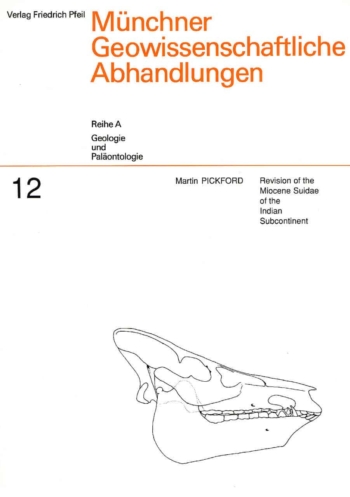
Revision of the Miocene Suidae of the Indian Subcontinent
30,00 €zzgl. Versandkosten / Versandkostenfrei in D
-

Paleozäne Foraminiferen von den Emperor Seamounts, NW-Pazifik (DSDP Leg 55)
40,00 €zzgl. Versandkosten / Versandkostenfrei in D
Wir sind gerne für Sie da
Verlag Dr. Friedrich Pfeil
Hauptstraße 12B
5232 Bergkirchen OT Günding – Germany
Tel.: +49 8131 61 46 590
Fax: +49 8131 61 46 591
E-Mail: info@pfeil-verlag.de
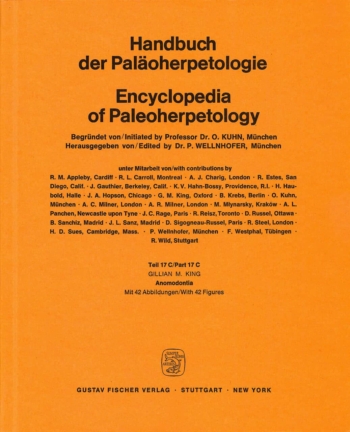
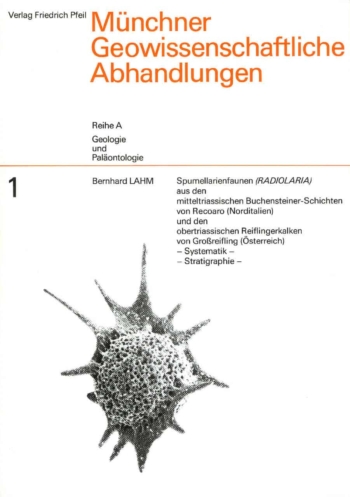
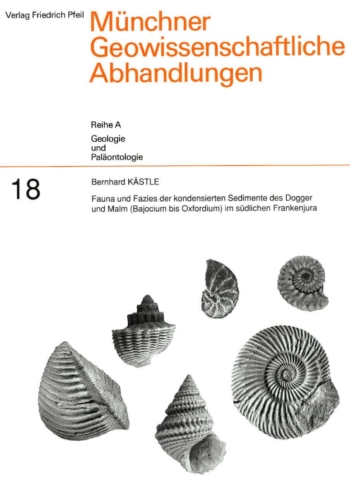
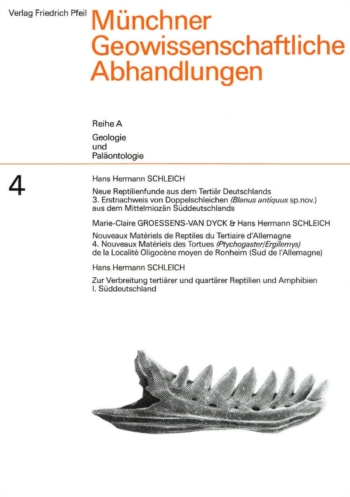
Rezensionen
Es gibt noch keine Rezensionen.